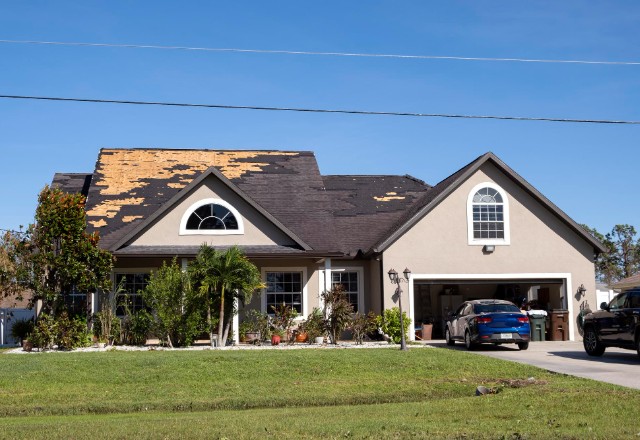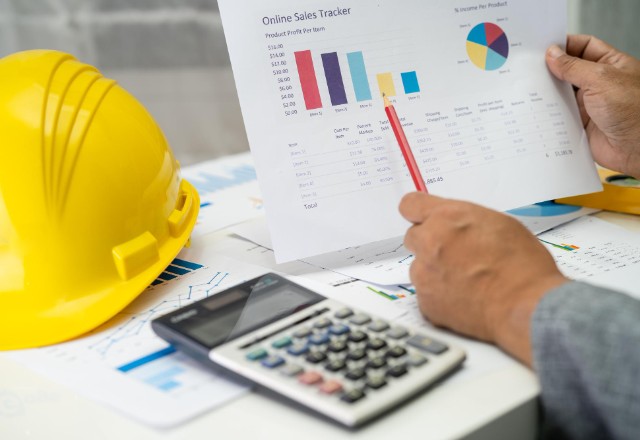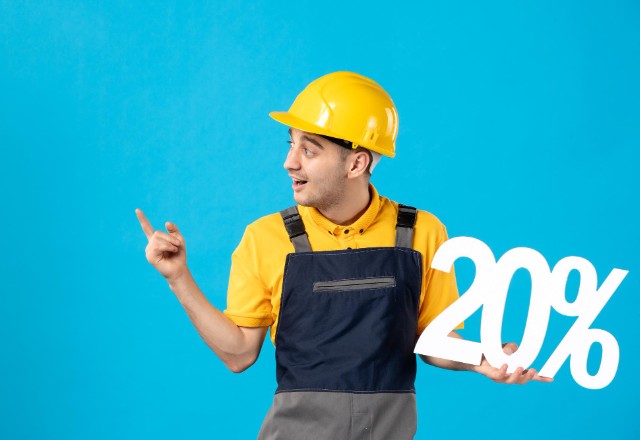Having a well-maintained and functioning roof is crucial for any house. A roof not only
provides protection from the elements but also contributes to the overall aesthetics and
energy efficiency of the home. However, over time, roofs can deteriorate due to various
factors such as wear and tear, weather conditions, or improper maintenance. In such
cases, it becomes necessary to consider demolishing and replacing the roof to ensure
proper functionality and avoid potential issues like water damage or structural problems.
In this article, we will focus on estimating the average cost of demolishing and replacing
the roof of a house that measures between 2,000 to 2,500 square feet. The cost of roof
replacement can vary depending on factors like roof type, roofing materials, labor costs,
geographical location, and the extent of the job. We will discuss these factors in more
detail to provide you with a general idea of what to expect when planning a roof
replacement project.
By understanding the average cost range and the various factors involved, homeowners
can make informed decisions regarding their roofing project. Whether one is considering
concrete tile, metal roofs, asphalt shingles, clay tiles, or other common roofing materials,
having an accurate estimate of the potential cost will help in budgeting and ensuring a
successful roof replacement project.
Disclaimer: This article is intended to provide general information about the average cost
of replacing a roof of 2,000 – 2,500 sq. ft. size. The actual cost may vary depending on the
size and scope of the project, as well as other factors such as building codes and local
regulations. Therefore, we recommend that you consult with a professional roofing
contractor for an accurate estimation of your project’s costs and to ensure proper
planning and execution. At Advance Roofing LLC, we are dedicated to providing
exceptional service and high-quality roofing solutions for our customers in Spokane, WA
and beyond. Contact us today for a consultation or more information about our services!
Factors That Affect the Cost of Roof Replacement
There are several factors that can significantly impact the cost of a roof replacement
project. Understanding these factors can help you estimate the total expenses and plan
your budget accordingly.
- Firstly, the size of the roof plays a crucial role in determining the cost. A
larger roof area will require more materials and labor, thus increasing the
overall cost. Additionally, the shape and complexity of the roof can also
influence the cost, as roofs with multiple angles and slopes may require
more specialized labor. - The choice of roofing materials is another significant factor. Different
materials such as asphalt shingles, concrete tiles, metal roofs, or clay
tiles have varying costs. Additionally, the quality and durability of the
materials can also affect the price. Labor costs can also vary depending on the roofing contractors and the
location. Labor charges can be influenced by factors such as market demand, availability of skilled workers, and overhead costs incurred by
the roofing company.- Other factors that can impact the cost include the removal of existing
layers, disposal of debris, and compliance with building codes and
permits. Roofing projects that involve the removal of multiple layers can
be more time-consuming and require additional labor, thus increasing
the cost. - Lastly, the geographical location can influence the price due to variations
in local market conditions, building regulations, and availability of
materials.
Considering all these factors will help you get an accurate estimate and ensure that you
have a realistic budget in place for your roof replacement project.

Average Cost Range for Replacing a 2,000-2,500 Sq. Ft. Roof
The average cost range for replacing the roof of a house within the size range of 2,000-
2,500 sq. ft. can vary significantly based on several factors. On average, homeowners can
expect to pay between $10,000 and $25,000 for a complete roof replacement. However, it
is important to note that this cost can be influenced by various factors such as the shape
and complexity of the roof, the choice of materials, labor costs, and geographic location.
Roofing Material Options and Their Costs
When it comes to roofing materials, homeowners have various options to choose from.
The cost of these materials can vary significantly, so it’s important to consider both the
budget and the desired benefits.
- One of the most popular and cost-effective options is asphalt shingles.
They are available in a wide range of colors and styles, making them
suitable for different architectural styles. The average cost for a 2,000-
2,500 sq. ft. house can range from $5,000 to $10,000, including labor
costs. - Metal roofs are another option that offers durability and energy
efficiency. While they may come at a higher upfront cost, their longevity
and low maintenance can make them cost-effective in the long run. The
average cost for a 2,000 sq. ft. metal roof can range from $9,000 to
$18,000, including labor costs. - Tile roofs, such as concrete tiles or clay tiles, are known for their
aesthetics and longevity. However, they can be more expensive
compared to other options. The average cost for a 2,000 sq. ft. tile roof
can range from $15,000 to $30,000, including labor costs.
It’s essential to consult with roofing contractors who can provide accurate estimates
based on the specific requirements of the project. They can also advise on factors like
roof pitch, local building codes, and other considerations that may affect the cost.
Ultimately, the right roofing material will depend on factors such as budget, desired
aesthetics, and long-term durability.

Labor Costs and Professional Services
When it comes to roof replacement, labor costs play a significant role in the overall
expenses. The average cost mentioned earlier includes these labor costs, which can vary
depending on various factors. It is essential to hire professional roofing contractors for
this job, both for quality and safety reasons.
Roofing contractors have the knowledge, skills, and experience to handle roof
replacements efficiently. They are equipped with the necessary tools and equipment
required for the job. Hiring professionals ensures that the roof replacement project is
done correctly, following building codes and regulations.
Having professionals handle the labor also provides peace of mind knowing that the work
is being done by experts. They can assess the condition of the roof, identify any
underlying issues, and provide appropriate solutions. They also work with precision,
ensuring that the new roof is installed securely and that all necessary steps, such as
insulation and waterproofing, are taken.
Additionally, professional roofing contractors can provide warranties on their work, giving
homeowners reassurance and protection against any potential damages or defects.
The cost of labor varies based on the complexity of the roofing project, the type of roofing
material, and the geographic location. It is recommended to obtain multiple quotes from
reputable roofing companies to get an accurate estimate for labor costs specific to your
situation.
Overall, while labor costs are a significant part of roof replacement expenses, investing in
professional services ensures a high-quality and safe result for your home.

Removal of Existing Roof Layers
The cost of replacing a roof can be affected if the existing roof layers need to be removed
before installing a new roof. The presence of multiple layers can increase both the labor
and material costs of the project.
When a roof has multiple layers, it adds complexity to the removal process. The roofing
contractors have to carefully strip away each layer, ensuring that all damaged or
deteriorated materials are properly disposed of. This requires additional time and effort,
which translates to higher labor costs.
Moreover, multiple layers can also impact the installation of the new roof. The added
weight and thickness of the existing layers may require reinforcements or adjustments to
the underlying structure, resulting in additional costs for materials and labor.
Furthermore, the presence of multiple layers can make it harder to detect underlying
issues, such as water damage or structural problems. These problems can go unnoticed
until the layers are removed, potentially leading to more extensive repairs or
replacements.

Location and Regional Cost Variation
Location plays a significant role in determining the cost to demolish and replace the roof
of a 2,000-2,500 square foot house. Prices can vary based on local material availability,
labor rates, and even climate considerations.
In urban areas or regions with higher labor costs, such as San Diego, the cost of hiring
roofing contractors may be higher compared to more rural areas. Similarly, if there is a
shortage of roofing materials in a particular location, it can drive up the cost of the
project.
Climate also influences roofing costs. In areas with extreme weather conditions, such as
hurricanes or heavy snowfall, roofs are often built to withstand these conditions, resulting
in higher material and construction costs.
Building codes and regulations also differ by location, and compliance with these codes
is essential. Additional costs may be incurred to obtain building permits or to ensure the
roofing project meets specific requirements.
Therefore, it is crucial to consider location when estimating the cost to demolish and
replace a roof. It is recommended to consult with local roofing companies to obtain an
accurate estimate that takes into account the unique factors of the regional market.

Additional Cost Factors to Consider
When budgeting for a roof replacement project, it’s important to consider the additional
costs that may arise. These costs can depend on various factors, such as the condition
of the existing roof and any specific requirements or features unique to your home. Here
are some additional cost factors to consider:
- Repairing underlying structural damage: During the demolition process, it’s possible to
uncover underlying structural damage, such as rotting or weakened framing. Repairing
these issues before installing the new roof can add to the overall cost. - Replacing roof features: If your existing roof has features such as chimneys, skylights,
or vents, they may need to be replaced or repaired during the roof replacement project.
This can require additional materials and labor costs. - Addressing ventilation needs: Proper attic ventilation is crucial for maintaining the
longevity and performance of your new roof. If your current ventilation system is
inadequate, it may need to be upgraded or modified, which can incur additional expenses. - Hazardous materials removal: If your existing roof contains hazardous materials, such
as asbestos or lead, their removal and disposal must be done by professionals according
to specific regulations. This process can result in additional costs. - Unforeseen complications: In some cases, unexpected challenges may arise during the
roof replacement project, such as unforeseen damage or complications with the existing
structure. These unforeseen costs can affect the overall budget.
When estimating the cost of a roof replacement, it’s important to account for these
additional factors to ensure an accurate estimate and avoid any surprises along the way.
Consulting with roofing contractors and obtaining multiple quotes can help you
understand and prepare for any potential additional costs.

Cost Comparison with Larger and Smaller Roofs
When it comes to roofing projects, the size of the roof can have a significant impact on
the cost. While the average cost to demolish and replace the roof of a 2,000-2,500 sq. ft.
house is a good starting point for estimating expenses, it’s important to understand how
the cost per square foot might change for roofs larger or smaller than this range.
For larger roofs, the cost per square foot tends to decrease. This is because larger roofs
often result in economies of scale, allowing roofing contractors to take advantage of bulk
purchasing and streamlined labor costs. Additionally, larger roofs may have fewer
complexities and features that require additional materials and labor, resulting in a more
straightforward and cost-effective installation process.
On the other hand, smaller roofs may have a slightly higher cost per square foot. This is
because smaller roofs often require more intricate work in terms of cutting, fitting, and
installing the roofing materials. Additionally, the cost of materials and labor may be
spread out over fewer square feet, resulting in a slightly higher expense.
While there can be variations in the cost per square foot for roofs larger or smaller than
2,000-2,500 sq. ft., it’s important to consider these potential differences when budgeting
for a roofing project. Contacting roofing contractors and obtaining multiple quotes based
on the specific size and features of your roof can help provide a more accurate estimate
for your individual project.

Tips for Cost Saving and Budgeting
When it comes to managing costs during a roof replacement project, there are several
practical tips that homeowners can follow to save money and stay within their budget.
- First and foremost, obtaining multiple quotes from different roofing
contractors is essential. This enables homeowners to compare prices
and services, ensuring they get the best value for their money. It’s also a
good idea to check the reputation and experience of the contractors
before making a decision. - Another strategy for cost saving is to consider long-term energy
efficiency. Investing in energy-efficient roofing materials, such as metal
roofs or asphalt shingles with reflective coatings, can help reduce
cooling costs in the long run. While these materials may have a higher
upfront cost, the energy savings over time can offset the initial
investment. - Exploring financing options is also worth considering. Some roofing
companies may offer financing plans or work with third-party lenders,
allowing homeowners to spread out the cost of the roof replacement
over time. This can help alleviate the financial burden and make the
project more affordable. - Lastly, it’s important to plan for unexpected expenses. Set aside a
contingency fund for any potential additional costs that may arise during
the project. This way, homeowners can avoid any financial surprises and
ensure that the roof replacement stays within their budget.
By following these practical tips, homeowners can effectively manage costs and budget
for a roof replacement project while still achieving a high-quality and durable roof for their
home.

Case Studies and Real-Life Examples
Case Study 1:
A homeowner needed to replace the roof of their 2,500 sq. ft. house due to extensive
water damage. The project involved a complete demolition of the existing roof and the
installation of a new asphalt shingle roof. The challenging aspect of this project was the
steep roof pitch, which required additional safety measures and specialized equipment.
Despite this, the homeowner was able to obtain multiple quotes from reputable roofing
contractors and selected one with a competitive price. The total cost of the project,
including labor, materials, and permits, came to $12,000. The new roof not only restored
the functionality of the house but also added curb appeal and increased its value.
Case Study 2:
A homeowner in a suburban area needed to replace the roof of their 2,000 sq. ft. house.
They wanted a more durable option than asphalt shingles, so they opted for a metal roof.
The project involved partial demolitions and the installation of a new metal roof, along
with necessary repairs to the underlying structure. This project also required approval
from the local building department due to building codes and regulations. After obtaining
multiple quotes from roofing contractors specialized in metal roofs, the homeowner
selected one that offered a competitive price. The total cost of the project, including
labor, materials, and permits, came to $15,000. The new metal roof provided enhanced
energy efficiency and long-term durability, making it a worthwhile investment for the
homeowner.

Conclusion
In conclusion, replacing the roof of a 2,500 sq. ft. house can vary in cost. To ensure a
successful roof replacement project, it is crucial to engage in careful planning, seek
professional consultation, and obtain thorough cost estimations. This helps homeowners
avoid unexpected expenses and ensures that the project is completed efficiently and
within their budget.
At our company, we understand the importance of these factors and are dedicated to
helping homeowners with roof repairs and replacements. We specialize in all types of
roofs, including asphalt shingles, concrete tiles, metal roofs, and more. Whether it’s a
small repair or a complete roof replacement, our team of experienced professionals is
ready to assist.
With proper planning, professional assistance, and reliable cost estimation, homeowners
can achieve a sturdy and appealing roof that enhances the value and curb appeal of their
property. Contact us today for a consultation and let us help you with your roofing needs.



 509-201-4190
509-201-4190
